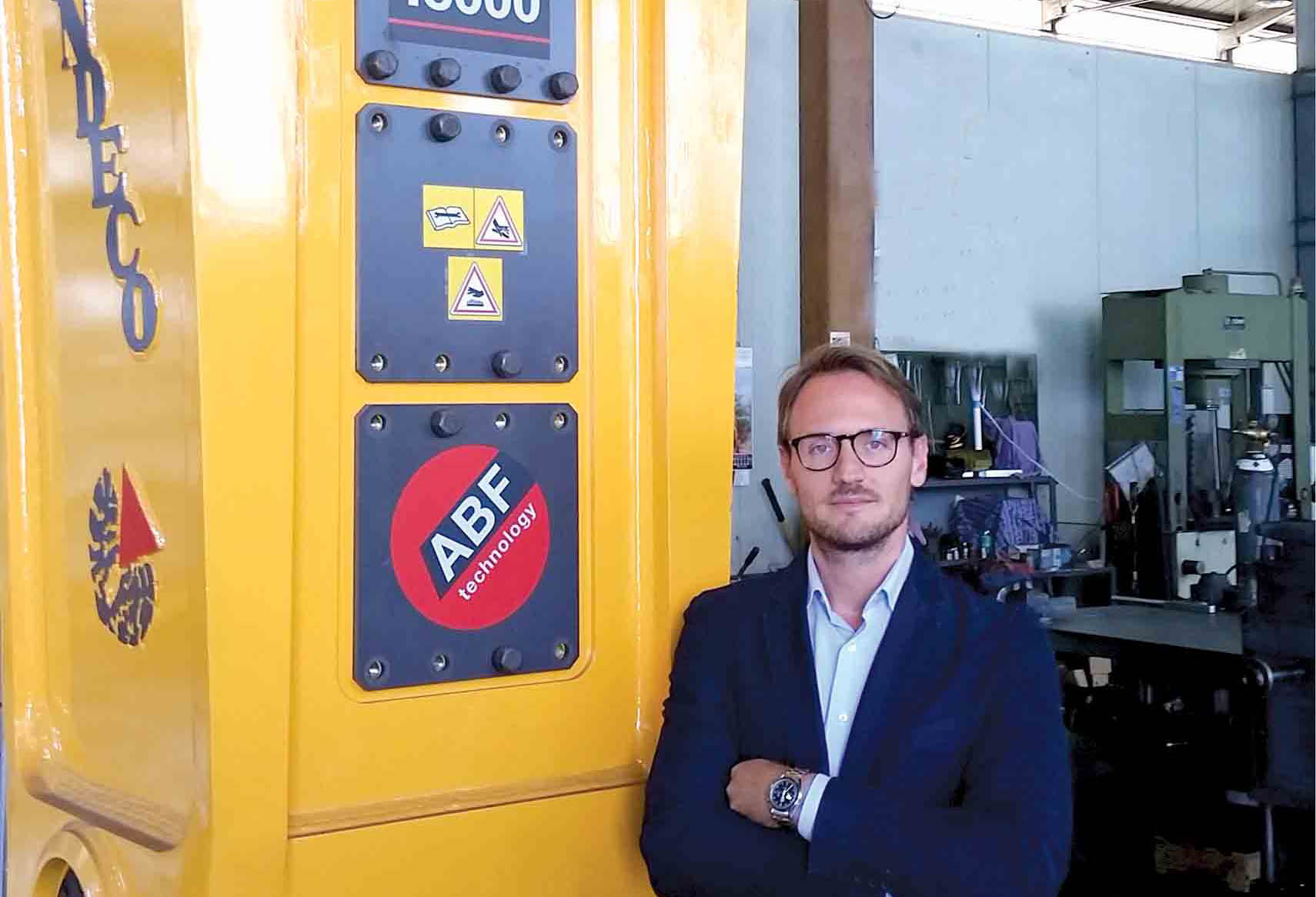
Large breakers are the only alternative today for quarrying applications where drilling and blasting is not an option. Lucio Garofalo reports on Italian firm Indeco’s impressive progress in this area of the quarrying equipment market.
In many countries, the use of explosives in quarrying is meeting growing difficulty due to environmental, logistical or safety reasons. In some cases, the problem has been solved by utilising large milling machines or cutter heads, but these solutions are not always an effective substitute for drilling and blasting. In the end, the only real alternative are breakers in large enough sizes to guarantee high productivity. For the last eight years Indeco has produced, with success, the HP 18000 with an energy per blow of 25,000joules, making it the largest series-produced breaker on the market. In a recent interview, Alessandro Ciccolella, mechanical engineer and head of R&D at Indeco, fleshed out the choices the company made to produce this giant.
Indeco was the first company to believe in large breakers, and to date, it is the only one to manufacture the largest breaker on the market as part of its standard production. Can you explain why the company decided to go for size?
“The large size of the breaker guarantees a breaking capacity necessary for delivering high productivity (and hence lower demolition costs per tonne) even when the rock has a very high unconfined compressive strength, i.e., well over 100 MPa, and a very low RQD index. The need for customers to maximise daily output, while reducing operating costs, gave us the motivation to invest and innovate in the design of larger, more efficient and reliable breakers.”
What are the concepts that led to the design of the HP 18000?
“We have to start from the assumption that breaker productivity is closely related to the size and breaking technology it uses. The geo-structural properties of the rock and geo-mechanical characterisation of quarries can vary greatly, so the breaker’s operating parameters have to be adaptable. All Indeco breakers, and the HP 18000 is no exception, feature intelligent technology that modulates the energy according to the rock hardness to guarantee constant maximum productivity. This principle led Indeco to develop the fuel saving system featuring an upgraded hydraulic system for consistent high efficiency. In other words, it allows the same work (productivity) to be performed using a lower hydraulic power (excavator fuel consumption).”
What are the problems of a large breaker?
“The design, engineering and development of an attachment that has no equals on the market involves not only heavy investment, but also skills that only experience in the field can produce. The costs of managing and maintaining large breakers are obviously proportionate to their size, and they are justified only if the breaker delivers exceptional productivity and reliability. This aspect also requires constant efforts in design and engineering, which has always formed the basis of the exceptional reliability and reduced management costs of all Indeco breakers. The design of such large and innovative breakers doesn’t happen overnight simply by increasing the proportions of the components and the breaker’s structure; it is the result of experience developed over decades in the quarries and on job sites across the globe.”














